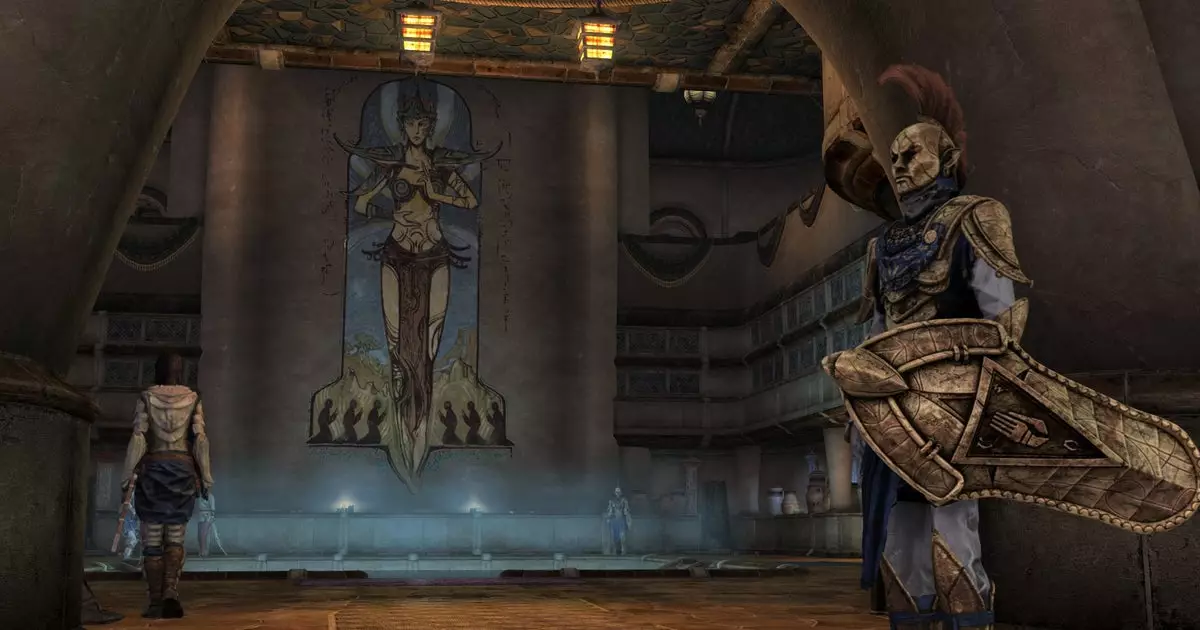The Elder Scrolls community has long celebrated the grandeur of Morrowind, the third installment that defined many players’ RPG experiences. Yet, despite its enduring popularity, a full-fledged remake leveraging Skyrim’s modern engine has remained a distant dream—until Skywind emerged. This project is more than just a mod; it is a testament to the dedication of dedicated fans who refuse to let the legacy of Morrowind fade into obscurity. Their vision is to recreate the expansive island of Vvardenfell, reimagined with Skyrim’s more sophisticated graphics, mechanics, and immersive scope. It’s a bold gamble, demanding not only technical expertise but an unwavering passion for preserving the original’s essence while invigorating it with modern design.
This goal, however, is fraught with challenges. Rebuilding a complex, lore-rich world like Morrowind isn’t just a matter of importing assets and trimming bugs. It requires meticulous attention to detail, a comprehensive understanding of both games’ mechanics, and the ability to seamlessly integrate voice acting, environment design, and narrative. The Skywind team’s continuous progress demonstrates their resolve, yet the project’s sheer scale points to a long horizon before the final product sees the light of day. Regardless of the delays, their updates serve more as proof of ongoing devotion than mere hopefulness—each milestone revealing how close they are to transforming a legendary game into a new, captivating experience.
The Power of Voice Acting: Giving Vvardenfell Life
One of the most critical components of any modern RPG—especially one rooted in a world as rich as Morrowind—is voice acting. It’s the voice that breathes life into characters, making figures like Vivec, Dagoth Ur, or Yagrum Bagarn resonate with players on a personal level. The Skywind team’s achievement of casting around 300 voice actors to bring approximately 3,000 NPCs to life is nothing short of extraordinary. It epitomizes a commitment to authenticity, detail, and depth; these voices will transform static dialogue into dynamic interactions, pulling players deeper into the narrative universe.
This milestone underscores the project’s comprehensive approach. Unlike earlier RPGs, where static text sufficed, modern fans crave realism and immersion. The challenge of capturing the essence of characters like Vivec—a god and poet—through voice alone is immense. It’s not simply about delivering lines but embodying personalities, regional dialects, and emotional nuance that stay true to the original lore. Jeff Baker’s portrayal of Dagoth Ur, for example, solidifies how voice casting is not just about hiring talent but selecting artists capable of embodying iconic roles. In a universe where every voice counts, missing out on any character’s perfect tone would undermine the project’s integrity.
Yet, even with such a significant milestone marked, fans and volunteers continue to rally behind the project. The Skywind team’s call for additional volunteers indicates the project’s layered complexity; the more eyes and ears involved, the richer the final experience. Volunteer contributions could include voice work, environment art, or character design—each element vital to recreating a cohesive and believable world. This open collaborative spirit fosters a community-driven approach that elevates Skywind beyond mere modding to the realm of genuine, crowd-sourced artistry.
The Future of Skywind and Its Impact on Skyrim Modding
While Skywind’s current status might be marked by patience and anticipation, its significance extends well beyond the boundaries of the Elder Scrolls community. This project exemplifies what passionate fans can achieve when they channel their love for a game into a collective effort. It reminds us that the legacy of Morrowind isn’t confined to its original release but can be revitalized with modern tools, community support, and sheer dedication.
Furthermore, Skywind’s evolution signals a shift in how we perceive modding communities. No longer are mods viewed as simple tweaks or add-ons; they are becoming vibrant, expansive projects that aim to redefine what is possible within a game’s ecosystem. The ongoing progress reflects a belief that nostalgic worlds can be reborn and enhanced rather than replaced, instilling a sense of continuity that resonates with veteran players and new explorers alike.
However, such ambitions also raise questions about the future landscape of game development itself. Will large projects like Skywind set a precedent encouraging developers to foster collaborative fan-driven initiatives? Or will they remain a passion project, sidelined by commercial interests? Regardless, Skywind demonstrates that compelling remakes rooted in love and craftsmanship can offer profound new dimensions for beloved classics—if only we have the patience and vision to see them through.

